This website uses cookies so that we can provide you with the best user experience possible. Cookie information is stored in your browser and performs functions such as recognising you when you return to our website and helping our team to understand which sections of the website you find most interesting and useful.
Penfolds 2023 Collection: The art of composition
db’s Bordeaux correspondent Colin Hay picks his highlights from the Penfolds 2023 Collection, which was launched in August with tastings across Europe, Asia and North America and impressed with the depth of the portfolio and the considerable value for money of the more ‘entry level’ wines.
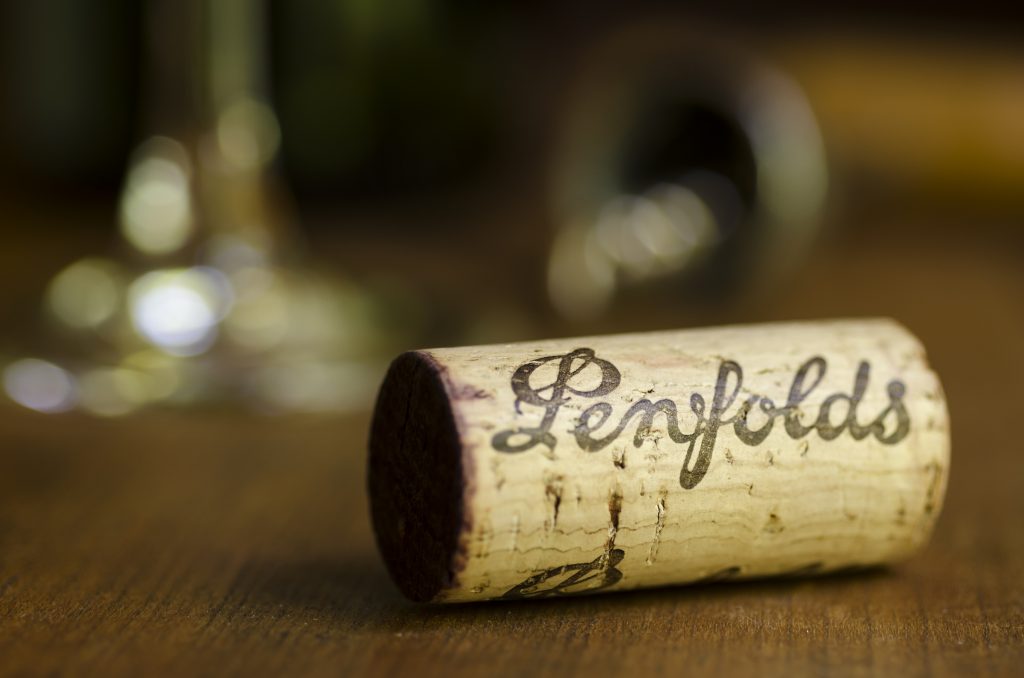
Penfolds 2023 Collection was launched in August with a global, or at least inter-regional, circumnavigation of the tasting rooms of Europe, Asia and North America. I was lucky enough to be invited to the Paris launch, held in a tiny restaurant in a quiet back street not far the Champs Élysées with such illuminati of the Parisian fine wine circuit as Thierry Dessauve (of Bettane & Dessauve), and Denis Savarot and Olivier Poels (of La Revue du Vin de France). I tasted through the wines (a selection of which are noted below) and talked to Penfold’s inimitable chief wine-maker Peter Gago about the release.
There are 25 wines in the European edition of Penfold’s new collection, 18 of which were presented in Paris (the restaurant, I surmise, was too small to accommodate them all!). Penfolds aficionados will already have noted that the collection includes a few more wines than were presented this time last year. That is because Bin 21 (a monocépage Grenache cuvee from the Barossa Valley) is a first release and the increasingly iconic Bin 707 and Quantum Bin 98 (both of which now commands price very close to Grange itself) return with the 2021 and 2019 vintages, respectively, having not been produced in the more challenging conditions of 2020.
All three are excellent, despite spanning the entire range of the pricing spectrum. But the addition of a wine and the return of two others does not quite make the numbers stack up. We are still two wines short. Both are new releases. The first is Penfolds’ new Oakville Napa Valley Cabernet Sauvignon. The second, fascinatingly, is the – for now – experimental Chinese Winemaking Trial 521. The first release of this wine hails from the 2021 vintage. It combines Cabernet Sauvignon from Shangri-La (not far from Moët & Hennessy’s Ao Yun) with Marselan from Ningxia. Neither wine, in this their first vintage, is to be released in Europe and neither was presented in Paris.
It is also important to note that Bin 169, dancing as it now does to the somewhat different rhythms of La Place de Bordeaux, will not be released until March. It is (for now, at least) the only one of the Penfolds wines to be distributed through the négociant system of La Place. I will taste it in the new year. Given Penfolds’ significant holdings in Bordeaux, their co-production of the inter-continental FWT Bin 585 with Dourthe and, indeed, the ostensible similarities between Ao Yun and Penfolds’ Chinese Winemaking Trial one wonders – somewhat mischievously, perhaps – whether, and if so when, Bin 169 might become one of a portfolio of Penfolds releases on La Place. Time will tell.
My tasting notes for a selection (a sort of ‘top ten’) of the highlights of the 2023 collection (including, of course, Bin 707) appear below. But lest the decision not to provide a tasting note for each and every wine presented in Paris be misinterpreted, let me be clear from the outset. Two things really struck me about the 2023 collection; both impressed me greatly. The first is the strength in depth of the portfolio across its entire range (both qualitative and geographic) and the considerable value for money offered by what we might see as the more entry level wines. The second is the distinctiveness of the style that Penfolds has crafted and the honing of that style, in each and every single wine that I tasted, in the present collection.
To understand these wines is to understand Penfolds’ distinct, possibly even unique, philosophy. And that philosophy is likely to appear at first sight a little strange, alien even, to a Bordeaux aficionado such as myself. But what strikes me now as I start to familiarise myself better with these wines – and perhaps also to place them in the context of the hors Bordeaux offerings that I now increasingly taste – is that Penfolds’ values are not so very different in the end than those of Bordeaux itself, particularly those of the Médoc.
That, at least, was my overriding thought as I slowly worked my way through the 2023 collection. For however unusual and distinct, challenging even, in their composition though many of these wines undoubtedly are, there is also something paradoxically classical about them.
The key to this is to understand that Peter Gago (like his predecessor, Max Schubert) heads a team of master blenders. And what is perhaps most interesting about that as a descriptor is that it is not terribly far from the self-identification of many of the Bordeaux classed growths’ head winemakers.
Put differently, the complexity in Penfolds wines is achieved through the fine art of composition. Indeed, it is that in the end which explains the seemingly strange combination of elements that go into these wines – whether it be the Cabernet Sauvignon sourced from McLaren, Coonawarra, Barossa Valley, Wrattonbully and Padthaway in Bin 389, the audacious combination of Coonawarra Cabernet Sauvignon and Bordeaux Merlot in FWT Bin 585 or the multi-vineyard selection of Cabernet Sauvignon from both the Napa Valley and Southern Australia that together comprise Quantum Bin 98. There is something bold, brave, radical and edgy about this search for palette (and, indeed, palate) complexity – not least the geographical range of the sourcing of the elements combined. But the process of composition and the skills it entails are not so very different, in the end, from those employed in constructing the final blend of a Médoc first growth.
And, in the glass, one is struck, time and again, by how elegant and refined, how judicious and moderated, how integral and harmonious – in short, how technically accomplished – is the composition here.
The two (ostensibly) French wines here illustrate the point rather well. But they are very different.
Fascinatingly, given the above, I have absolutely no qualms about referring to Penfolds’ French Wine Trial Bin 585 as a vin de terroir. That impression is only reinforced by tasting this (its second) release, the 2020. It might immediately be protested that FWT is at minimum a wine of two terroirs, given that the fruit from which it is sourced come from two properties – Chateaux Cambon La Pelouse and Belle-Vue in the Haut-Médoc on the southern border of Margaux very close to Giscours. But the point is that these are contiguous vineyards. The properties are neighbours, you can walk between the chateaux themselves in 5 minutes and whilst both vineyards are in fact comprised of a variety of micro-terroirs, many of these are shared. More significantly still, the wines (this release and its predecessor, the 2019) taste like they come from a place. And, crucially, they taste like they come from this place. They are, in other words, excellent and authentic expressions of their fine terroir and they have me thinking ‘southern Margaux’ when I taste them. The grapes that go into FWT Bin 585 are, presumably, carefully selected and come from the best parcels from each estate. But, impressively, I find myself in no doubt that the final blend is significantly stronger than the grands vins of either of the estates from which it hails in both of these vintages. That is quite an achievement and, to be fair, not quite what I imagined when the project was first described to me.
And what of Penfolds II Cabernet Sauvignon Merlot MV? It is difficult to imagine a concept for a wine more likely to annoy and irritate the traditionalist. And when it comes to Bordeaux (at least), I turn out to be something of a traditionalist myself (even if I struggle to complete the sentence as I type this). The MV stands for ‘multiple vintages’ and is an alternative to ‘NV’ – ‘non vintage’. In fact there are just two vintages in this wine. ‘NV’ might, in fact, be more accurate (see, I’m not just a traditionalist but something of a pedant too!). Just over half of the fruit is Coonawarra Cabernet Sauvignon from 2021 and the balance Bordeaux Merlot from 2020 (sourced from Dourthe and, presumably, from a combination of left- and right-bank vineyards). The Bordeaux traditionalist in me has already lost quite a bit of my remaining hair! This does not sound like any wine I have drunk before, nor necessarily a wine I want to drink. And that is before it is explained to me that, in order to be able to sell this wine in France, it needs to be bottled in Australia. I find myself calculating the carbon footprint.
But … and there is a ‘but’, you knew that it was coming. When I taste this wine is it both so much better than I imagined it could be and so different than I imagined it would be. The choice to blend the two consecutive vintages rather than those which, in a sense by accident, happen to share the same calendar year is clearly a good one. But perhaps more surprisingly, this is a wine of balance, integration, harmony, poise and tension. I have tasted so many wines comprised from contiguous parcels of ostensibly similar terroirs that feel less comfortable in the same glass – above all at this early stage – that those here assembled. The labour of love and the craft in the composition is clear.
It is there again, above all for me, in the three greatest wines of this tasting – the Yattarna Bin 144 Chardonnay 2021 (alongside the 2018 almost certainly the best southern hemisphere Chardonnay I have ever tasted), a wonderfully vivid and vibrant Bin 707 Cabernet Sauvignon 2021 and the somewhat more austere yet utterly beguiling Grange 2019.
Top Ten highlights
Reserve Bin A Adelaide Hills Chardonnay 2022. (100% Chardonnay from Adelaide Hills, Tasmania; pH 3.1; aged for 8 months in French oak barrels, 75 % of which were new; 12.5% alcohol). Refined, almost delicate which is impressive given the power and intensity here. This is bright, fresh and crisp. Waxy. Lemon rind. Orange blossom. Citrus – lime above all. A little fresh green apple skin. Very fresh (that word again!). Crunchy, but full, rich and ample on the attack at the same time. There’s a tension, a finesse and an elegance to this that is very impressive. And a juiciness on the long and chiselled finish. Great value. 96 (RRP: £80).
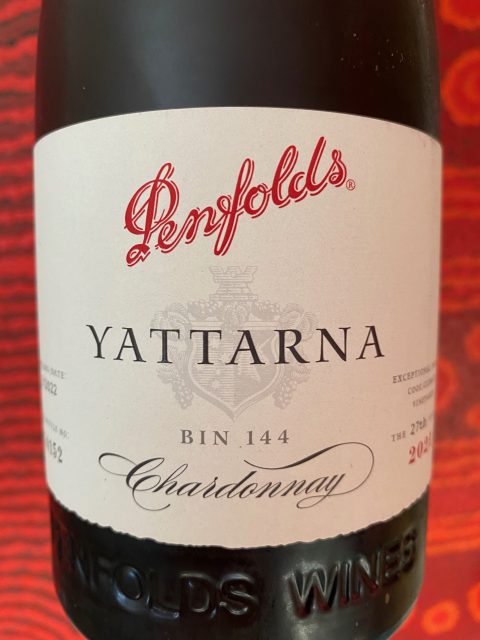
Yattarna Bin 144 Chardonnay 2021 (100% Chardonnay, sourced as follows: Tasmania, 81%; Tumbarumba, 10%; and Adelaide Hills, 9%; pH 3.1; aged for 9 months in French oak barrels, 70% of which were new; 13% alcohol; 20% of the fruit that would normally go into this I is being retained for ‘V’, the experimental multi-vintage edition of this wine). The name ‘Yattarna’, Peter Gago tells me, means essentially ‘little by little’. It’s come a long way and this, alongside the 2018, is the finest vintage to date. It is also perhaps the finest southern hemisphere Chardonnay that I have ever tasted. Very beautiful. Very stylish. Very sleek but fabulously rich at the same time – and with all the tension that implies. Green-hued. Very youthful and nascent but with such great potential. Wet stone minerality. Very lifted and aerial, pure, intense and sensuous. Yuzu. Saffron. Candlewax. Lime zest. Pink grapefruit. Oyster shell. Lime cordial. Almond. This is spot-light bright and window-shatteringly crisp. Laser-like in both its intensity and its freshness. Redcurrant leaf. Poised and coiled, tense and energetic. Super-pure. Rich but with no impression of richness so direct, linear and focussed is it. I love it. So much potential and the precision and clarity as the 2018 shows will only be enhanced by bottle-aging. The prospect is salivating. 98 (RRP: £147).
Bin 21 Barossa Valley Grenache 2022 (100% Grenache from the Barossa Valley; pH 3.52; aged in French oak, 6% of which is new; 14.5% alcohol). A new release and very impressive it is too. Grenache from Barossa, at least in the hands of Penfolds’ winemaking team, turns out to be pure, fresh, bright, vibrant and racy. This is not a wine of great complexity, but it is a wine of balance and harmony, poise and a certain precision. There are nice chewy tannins on the finish too indicating a certain aging potential. 93 (RRP: £38).
Bin 389 Cabernet Shiraz 2021 (53% Cabernet Sauvignon; 47% Shiraz; the fruit is sourced from McLaren, Coonawarra, Barossa Valley, Wrattonbully and Padthaway; pH 3.67; aged for 12 months in American oak hogsheads, 37% of which are new; 14.5% alcohol). Earthy. A little closed at first (and at second, too!). Cinnamon and baking spices. Black cherry and sour cherry notes too. Big, ample, a little foursquare. The oak is taking a little longer to bed in here – but this feels like a wine for the long haul. Serious and voluminous, yet reassuringly crystalline in the mid-palate. Gracious despite the considerable density, especially on the mid-palate. But on the finish this returns to being a little stolid. It needs time in a cold cellar – quite a lot of it in fact. But there’s considerable promise and potential here. 94 (RRP: £71).
RWT Bin 798 Barossa Valley Shiraz 2021 (100% Barossa Valley Shiraz; aged for 14 months in French oak, 80% of which is new; pH 3.69; 14.5% alcohol). Hyper-pure and more open and expressive aromatically than the 2020 was this time last year. Fluid. Crystalline – impressively so. So well-delineated in and through the mid-palate and nicely layered too; a serious and accomplished wine. Pure, precise, engaging and dynamic. Chiselled and shapely. Sapid on the finish and with a lovely touch of saline liquorice to herald the finale. Cloves. Green peppercorns. The oak use and incorporation is impeccable. 96+ (RRP: £141).
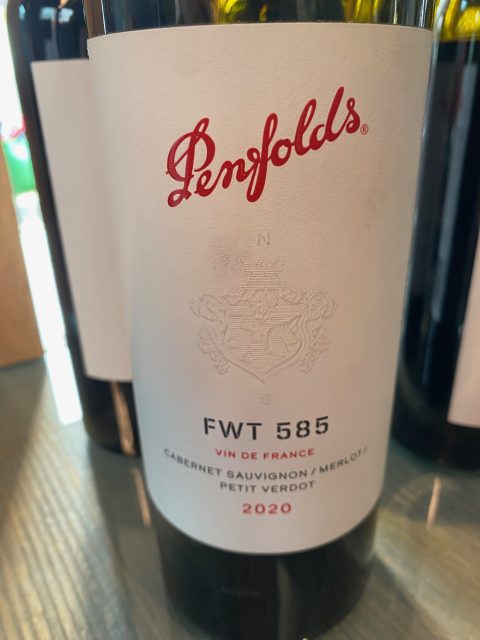
French Wine Trial FWT Bin 585 2020 (Vin de France; 52% Cabernet Sauvignon; 41% Merlot; 7% Petit Verdot; pH 3.68; aged for 12 months in a combination of French and American oak barrels, around 20% new French and 20% new American oak; 13.5% alcohol). Since all the fruit comes from the Bellevue and Cambon La Pelouse estates this could, presumably, almost be bottled as appellation Haut-Médoc. Subtle, elegant, refined and pillowy (I had ‘blowsy’ at first). Fleshy, plump, full and rich. A lovely shape in the mouth and great balance and harmony – finely-structured. Tense, as all these wines are. Gracious and limpid. The quality (and distinct qualities) of the vintage are very evident. There’s an impressive clarity and harmony and this feels relaxed and integrated. A touch of Médocain florality, leafy Cabernet undertones too; cedar; tobacco leaf; a slight ferrous hint to the minerality and, of course, dark plump ripe berries. Rippling, juicy and sapid on the refreshing finish – again, very expressive of the 2020 vintage. Finally, there’s a nice granularity to the tannins bringing definition to the finish and releasing sapidity as they grip. 95 (RRP: £75).
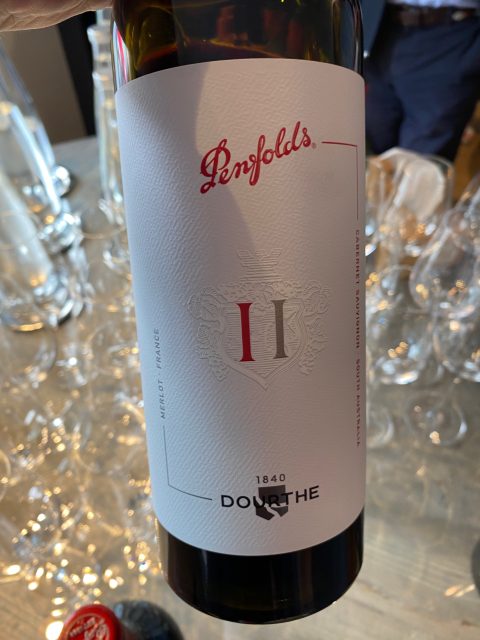
Penfolds II Cabernet Sauvignon Merlot MV Second Release (52% Coonawara CS from 2021; 48% Bordeaux Merlot from 2020; 14% alcohol). I like the idea of taking half the fruit from the 2021 southern hemisphere summer and the rest from the 2020 northern hemisphere. That is surely how to make a wine like this (you have a year to work with and can chose to stay within the calendar year or not to produce the optimal blend). Graphite, cedar. Limpid. Works better than many inter-region French wines. Limpid. Glossy. Finely-textured and actually very classical. Pleasing Bordeaux florality. Fresh, quite full and ample but nicely structured too and taut to the core. The wine is nicely brought back to the well-defined spine to form the finish. Linear and tight. Tender and charged on the finish., Long and elegant. 94 (RRP: £275).
Quantum Bin 98 2019 (92% Cabernet Sauvignon sourced from vineyards in the Napa Valley and 8% Shiraz sourced from Southern Australia; pH 3.73; aged for 16 months in a combination of new American and new French oak barrels; 14.5% alcohol). Very much a ‘wine of the world’, with quite a few frequent flier points. I find this much stronger and more interesting than Bin 149 and much less sweet in its fruit-profile. This feels reassuringly Californian, with an additional dollop of Southern Australian spice, peps and intensity. Full, bold, rich, ample and broad on the nose and entry. A nice touch of cedar. Big-boned and broad-shouldered – as if the already considerable Californian frame had somehow been stretched and further amplified with the addition of a little Australian muscle. The integration of both the wood and the components is seamless. Big and plummy but with a certain finesse and delicacy. Juicy and fresh on the finish. Impressive if imposing – it was hardly going to be anything else! 96 (RRP: £652).
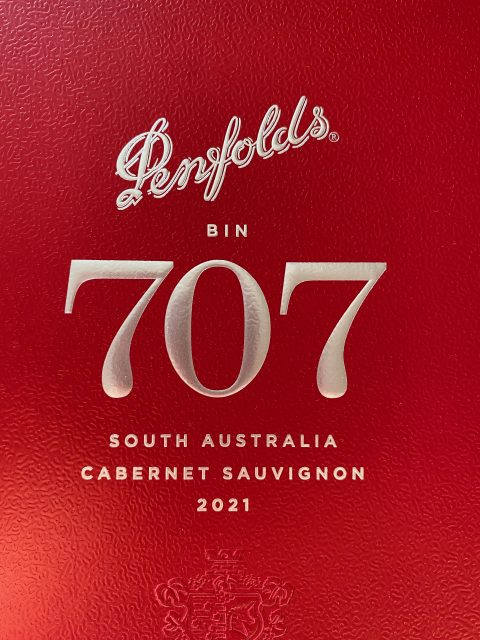
Bin 707 Cabernet Sauvignon 2021 (100% Cabernet Sauvignon; sourced from Coonawarra, Barossa Valley and Wrattonbully; pH 3.65; aged for 16 months in new American oak hogsheads; 14.5% alcohol). An incredibly pure, precise and focussed wine, charged with bright, crisp, crunchy fresh berry fruit and fifty shades of Cabernet cassis. Tensile tannins, with grain but exquisite finesse. This is vivid, vibrant, energetic and dynamic in its clarity and luminosity. A tidal wave of fresh berries. The fruit is tightly coiled and strapped to the well-defined, chiselled backbone. It glides over the palate, glistening as it does so and releasing little eddies and undercurrents of fresh fruit and juicy sapidity. The oak is almost imperceptible and this is remarkably accessible already. Great indeed. 98 (RRP: £475)
Grange 2019 (97% Shiraz and 3% Cabernet Sauvignon; sourced from Barossa Valley, McLaren Vale, Coonawarra and Clare Valley; pH: 3.62; aged for 19 months in new American oak hogsheads; 14.5% alcohol). More classical than the 2018 and a tad more austere – but I rather like that. Glorious. Cordite. Incense. Embers. A hint of truffle. Mulberry and mulberry compote, a little blueberry, bramble and Kalamata tapenade. A gamey note; venison Bresaola perhaps. Gorgeous. Radiant and glistening in its mid-palate limpidity and luminosity. Chocolate. Hoisin. Chinese five spice. Szechuan peppercorns, freshly crushed. This has great clarity, precision and focus. There’s beautiful integrity and harmony here too. The early integration of the fruit in this is so important for that sense of holism here – everything here is as one. Seamless, with plunge pool coolness in the mid-palate. Salinity and sapidity combine on the sensuous finish. The tannins are incredibly fine-grained. Wondrous with so much composure and refinement. 98+ (RRP: £670).

